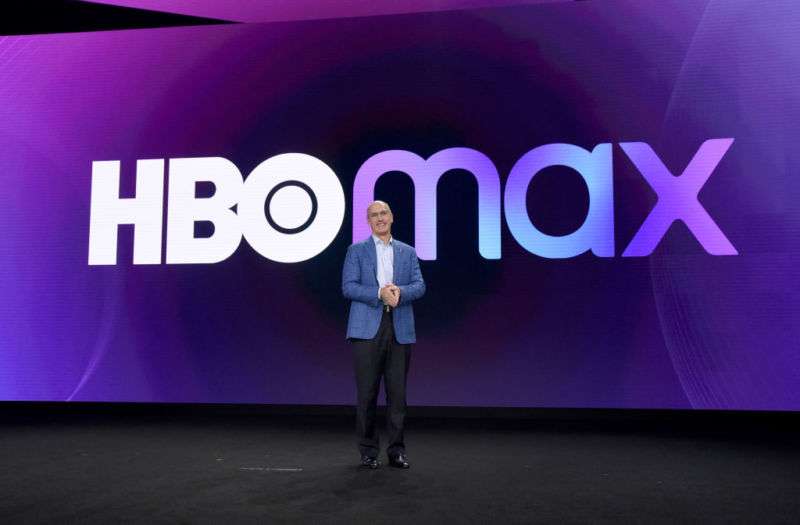
As DirecTV tanks, AT&T says it will “re-bundle” TV with HBO Max

AT&T’s traditional TV business is tanking, with the company having lost nearly 5 million satellite-and-wireline TV customers since the end of 2016.
But AT&T President John Stankey sees a path forward in recreating the traditional cable-TV bundle on the Internet. AT&T’s HBO Max is slated to launch in May 2020 for $14.99 a month, and AT&T has set an ambitious goal of 50 million US subscribers within five years.
A subscriber number like that would make HBO Max far bigger than AT&T’s DirecTV satellite division and its U-verse wireline TV service. But ultimately, the service customers get could end up looking pretty similar to DirecTV, U-verse, or cable TV.
“Stankey said the vision for HBO Max is to create a bundle of content that includes movies and shows not owned by WarnerMedia in addition to those it creates and licenses on its own,” Vox wrote yesterday in a report titled “HBO Max wants to be the next cable bundle instead of the next Netflix.” The report summarizes an interview Stankey gave at Recode’s Code Media conference.
HBO Max will “at some point in time” be “a platform that we allow others to bring content into,” Stankey said. “I don’t think, from my point of view, we’re ever going to have a lock or a monopoly on creativity.”
“Re-aggregate and re-bundle”
Stankey, a 34-year AT&T employee who is president and chief operating officer, is second-in-command to AT&T CEO Randall Stephenson and may be in line to become CEO when Stephenson retires. He is also CEO of WarnerMedia, the AT&T division that includes HBO.
Stankey noted that the proliferation of online video services has caused the traditional cable bundle to “fragment” into multiple platforms. Customers are frustrated about “the fragmentation of the bundle,” but AT&T can bring the bundle back together, Stankey said.
“We’re basically unbundling to re-bundle,” Stankey said. “At some point, there will be platforms that re-aggregate and re-bundle, and we’d like the [HBO Max] platform ultimately to be a place where re-aggregation occurs. And that doesn’t just mean our content.”
You can see the whole Stankey interview in the video below. The bundling discussion starts at 29:10:
With AT&T, expect price increases
If AT&T fully recreated the cable bundle and still charged $14.99 a month for all of it, that’d be a good deal. But that isn’t likely, as AT&T has already developed a history of raising online streaming prices to amounts far greater than the introductory prices.
DirecTV Now, AT&T’s online alternative to DirecTV satellite service, was initially pitched in 2016 as a $35-per-month plan with more than 100 channels. But AT&T has raised prices multiple times and lowered the number of channels by removing ones that aren’t part of the AT&T-owned Time Warner Inc.
The service, since renamed “AT&T TV Now,” today costs $65 a month for 45 channels including HBO. Packages with more than 100 channels cost at least $124 a month, while the “Ultimate” package costs $135 a month for 125 channels.
At $14.99 a month, HBO Max’s price would be similar to Netflix’s standard and premium offerings that cost $12.99 and $15.99, respectively. HBO Max’s price would also be identical to the current price of HBO Now, even though HBO Max would have all the HBO content plus other stuff. But as we noted with the DirecTV Now example, it wouldn’t be surprising to see AT&T raise HBO Max prices significantly in the years after it launches.
AT&T scoffs at net neutrality concerns
AT&T becoming a bigger player in online video would raise net neutrality concerns, because AT&T could use its control over home and mobile broadband networks to steer customers away from rival online services and toward AT&T’s.
In yesterday’s Recode interview, Stankey claimed that it would be ridiculous for anyone to worry at all about AT&T or other ISPs acting in anti-competitive ways with online streaming.
“You’d be hard-pressed to point to an instance of anybody’s behavior that would suggest that there is any kind of discrimination, favoritism, or anything else going on in how people get to content on the Internet over a broadband connection,” Stankey said. “It’s a problem that’s non-existent. There’s absolutely nothing that’s occurring.”
Stankey would prefer that consumers direct their ire elsewhere. “I’d be far more concerned over the scale of what’s occurring in terms of distribution platforms on mobile OSes, in terms and conditions associated with new product development on that and what that does to squash innovation, than anything to do with how traffic over the Internet is being treated today,” he said.
But Stankey is wrong that AT&T hasn’t shown “favoritism” in its treatment of video services. The Federal Communications Commission in January 2017 accused AT&T and Verizon of violating net neutrality rules by allowing their own video services (including AT&T’s DirecTV) to stream on their mobile networks without counting against customers’ data caps, while charging other video providers for the same data cap exemptions.
FCC Chairman Ajit Pai rescinded that finding shortly after taking over, but that doesn’t change the fact that AT&T gave its own video content favorable treatment under the data caps imposed on its mobile service.
Currently, AT&T imposes data caps ranging from 150GB to 1TB on most of its home broadband plans, which can make it hard for TV watchers to get rid of cable or satellite and use online streaming exclusively. But AT&T gives customers an upgrade to unlimited data if they pay an extra $30 a month or subscribe to DirecTV or U-verse TV. That means customers who prefer online streaming to AT&T’s own TV services could have to pay $30 a month extra to get enough data or pay $10 for each additional 50GB.
Under these schemes, AT&T hasn’t intentionally harmed the streaming performance of Netflix and other third-party services. But AT&T has made it more expensive for customers on AT&T broadband connections to make extensive use of those third-party services. The company has also used the unlimited-data perk to push customers toward AT&T’s own TV services.
The old net neutrality rules didn’t include a ban on data caps or zero-rating schemes that exempt content from data caps, but the FCC evaluated individual implementations to determine whether they were anti-competitive or anti-consumer. Since the Trump administration’s repeal, the FCC hasn’t enforced any net neutrality rules or scrutinized data-cap practices. But Washington state is enforcing a net neutrality law, and states including California intend to do so in the future after all appeals are exhausted in a lawsuit over the FCC’s repeal of net neutrality rules.
Stankey says that AT&T won’t abuse its control over broadband networks regardless of whether net neutrality rules are enforced in the future. “There was nothing [in terms of ISPs discriminating]. It’s not happened,” he said yesterday. “We all want a good broadband connection that people can use to get wherever they want to get.”




